“If you deprive yourself of outsourcing and your competitors do not, you’re putting yourself out of business.”
Lee Kuan Yew, Former Prime Minister of Singapore
Introduction
While building a website, a mobile application, or any other digital product, many companies consider outsourcing software development. A few years ago the main reason given for outsourcing was a reduction in costs and this is still sometimes the case, but this trend has changed over time, and the hourly rates of software developers from Eastern Europe and Asia have significantly grown.
Despite this fact, more than one-third of small businesses prefer to entrust software development projects to outsourcing partners and feel positive about that.
To deepen your understanding of the reasons and to see the outsourcing process from the inside, we suggest you follow our Ultimate Guide on How To Effectively Outsource Software Development. As a company that has successfully completed more than 350 outsourced projects, we will tell you about the challenges that customers face during the development process and reveal some secrets to make this process more efficient and low-risk.
The CactusSoft team will be glad to navigate you throughout the process, starting from the very definition of outsourcing and finishing with the technical setup for your project. In-depth details will help you to use all the benefits of mutual collaboration with your potential partner.
Let’s get started!
The Guide Content
Chapter 1 What is software outsourcing and why it’s now not only about the price
Chapter 2 How to choose the country and outsourcing partner
Chapter 3 Let’s start a new project: the set-up process
Chapter 4 Step 1. Business analysis and design are key
Chapter 5 Step 2. Software development: quality is a must
Chapter 6 Step 3. Testing and support for the result
Chapter 7 FAQ about outsourcing software development
Chapter 1. What is software outsourcing and why it’s now not only about the price
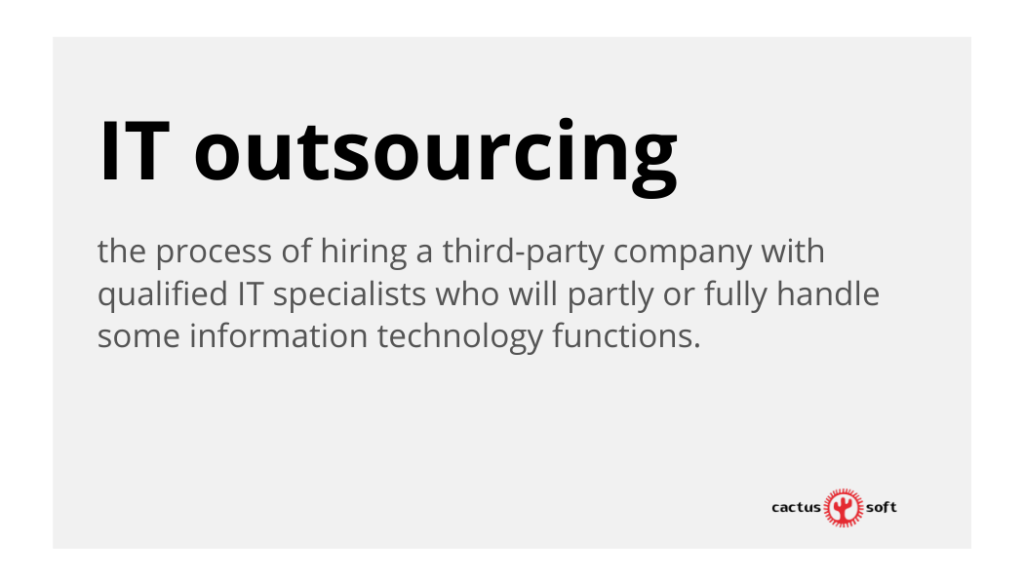
The definition of software development or IT outsourcing can be described as the process of hiring a third-party company with qualified IT specialists who will partly or fully handle some information technology functions.
Big companies that outsource – Alibaba, WhatsApp, TransferWise, Google, Basecamp, Skype, Slack and many more.
What are the main reasons companies decide to outsource?
- To allow internal employees to focus on critical tasks
- To improve service quality
- Too hard to hire talents in-house
- To take help from highly skilled professionals
- Flexibility in the management process
The main types of software development outsourcing
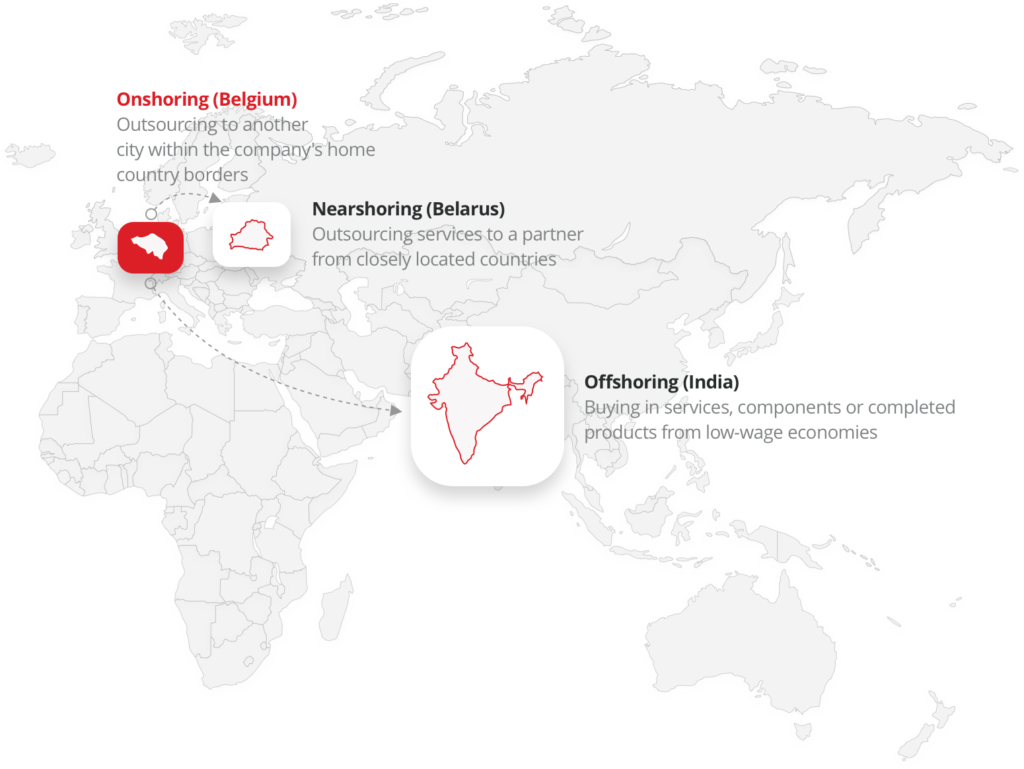
Nearshore outsourcing
Nearshoring means outsourcing services to a partner from a country located nearby, or somewhere around your company’s geographical region. For instance, if you are based in the Netherlands, an outsourcing company in Belarus can work as your nearshoring partner.
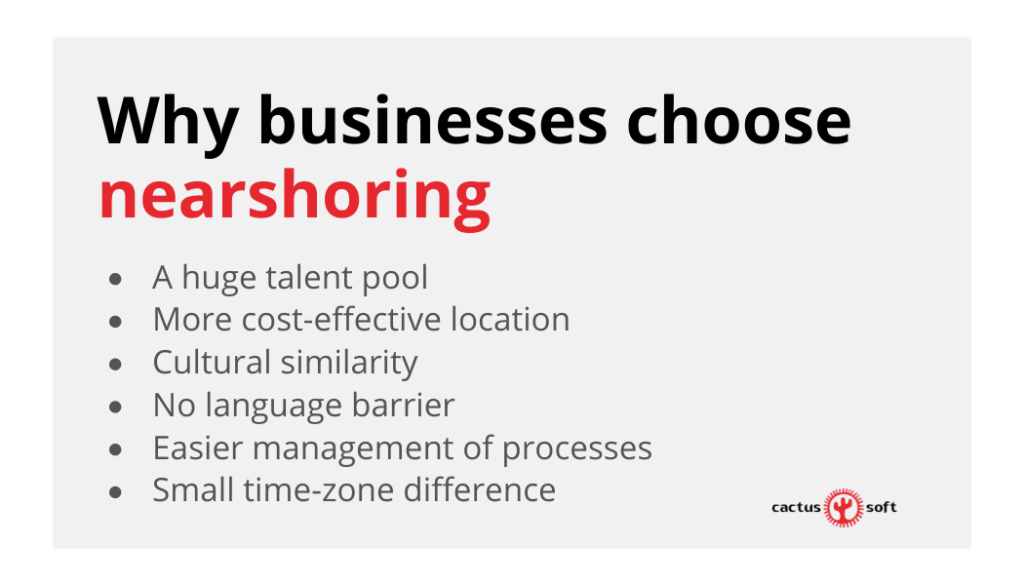
Interesting fact: Slack is one of the examples of a nearshoring outsourcing success story. They outsourced logo creation, website design, web, and mobile applications to a Canadian design team MetaLab and that helped them to raise a $250 million investment.
Read the interview of the CEO of Be-Mobile, who was looking for developers in seven countries >>>
Offshore outsourcing
Offshoring is about a big distance. Companies sacrifice nearshoring convenience to maintain even lower operational costs. Generally, the development process moves from West to East. These are countries with other economic conditions and preferences. Most of the time outsourcing partners are found in India, China, or the Philippines.
The biggest challenge arises when it comes to communication problems caused by time-zone adjustments and complexity with business trips to the client’s office and vice versa.
However, we can still highlight the benefits of the offshoring model.
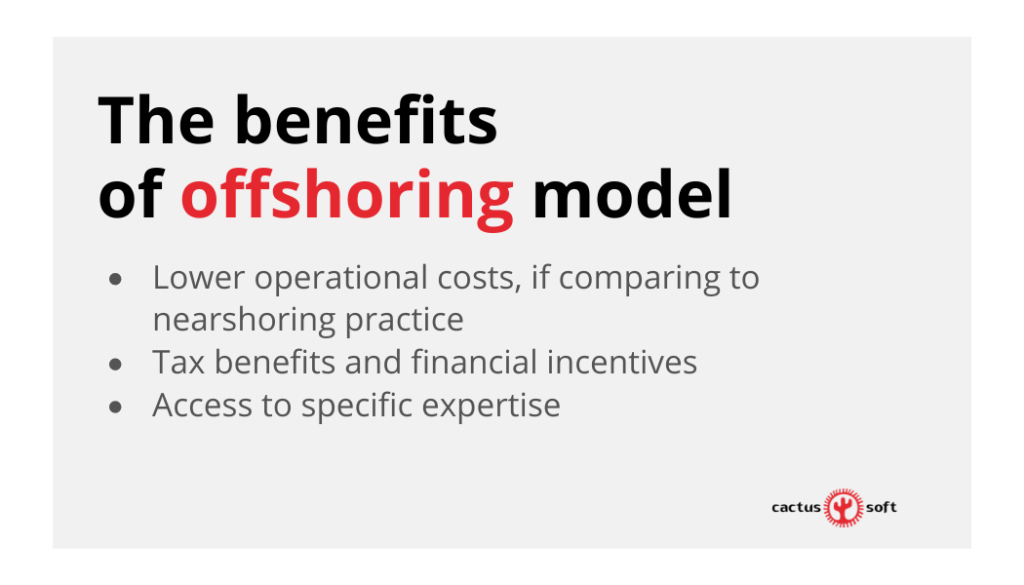
Onshore outsourcing
Basically, it means outsourcing software development to another city within the company’s home country borders. By using this approach, companies avoid the risks associated with offshoring like cultural differences or foreign taxing policies, not to mention they invest in their country’s economy.
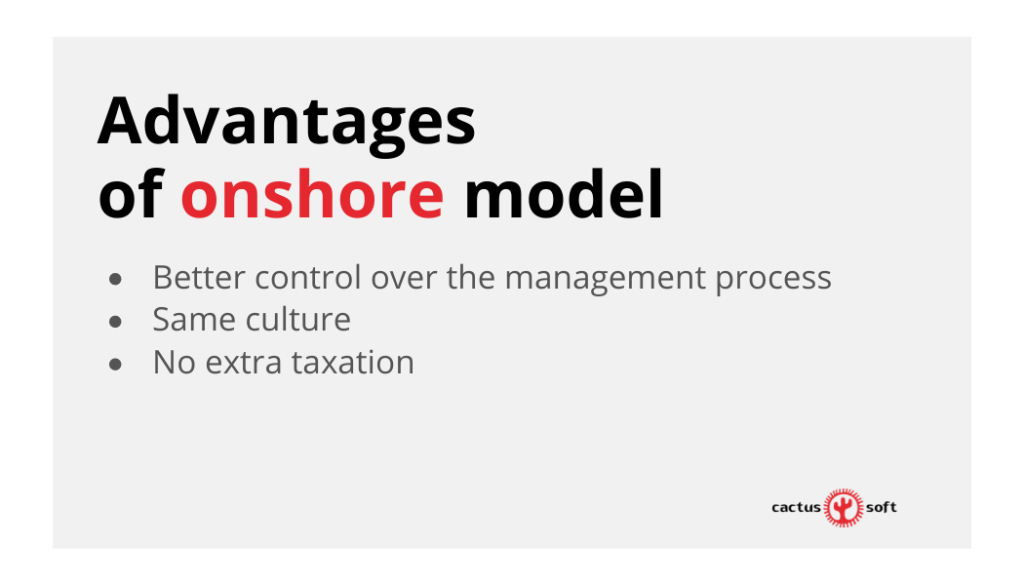
Next Chapter: How to choose the country, outsourcing partner and business model.








